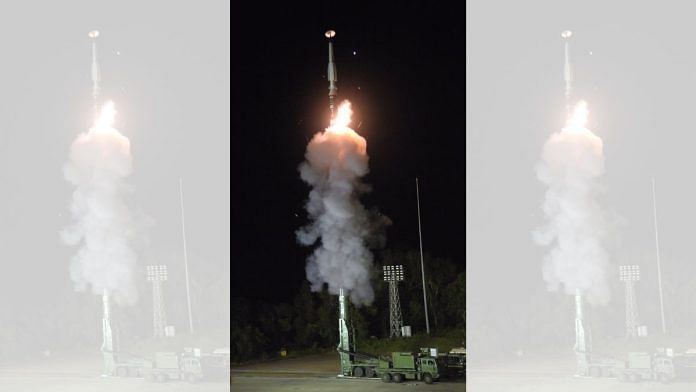New Delhi: In a major achievement, India has test-fired its maiden long-range hypersonic missile, with speed of ballistic missiles but the manoeuvring capabilities of cruise missiles, bringing it into a league of select nations that have this capability.
The missile that was test-fired from the Dr A.P.J Abdul Kalam Island, off-the-coast of Odisha, has a range of over 1,500 km and is capable of carrying “various payloads”, sources in the defence establishment said. It will travel at six times the speed of sound.
In a post on X Sunday, Defence Minister Rajnath Singh said that the test is a “historic moment and this significant achievement has put our country in the group of select nations having capabilities of such critical and advanced military technologies”.
Defence sources said that the hypersonic missile is designed to carry “various payloads for ranges greater than 1,500 km for all the services of the armed forces”.
They added that the missile was tracked by various range systems deployed in multiple domains.
“The flight data obtained from down range ship stations confirmed the successful terminal manoeuvres and impact with high degree of accuracy,” the sources said.
They stressed that the missile has been indigenously developed.
Also Read: Romeos done, Navy to install indigenous software-defined radio in all its aerial assets
2020 HSTDV test verified critical tech
The development comes just about four years after India test-fired the Hypersonic Technology Demonstrator Vehicle (HSTDV), making it only the fourth country in the world after the US, China, and Russia, to develop and test the technology.
ThePrint had reported at the time that India will be making its first hypersonic missile in the next five years.
The test had led to verification of many critical technologies such as aerodynamic configuration for hypersonic manoeuvres, use of scramjet propulsion for ignition and sustained combustion at hypersonic flow, thermo-structural characterisation of high temperature materials, and separation mechanism at hypersonic velocities, among others.
Hypersonic missiles can travel at speeds faster than Mach 5 (five times the speed of sound) or 3,800 miles (6,115 km) per hour—much faster than other ballistic and cruise missiles, making them hard to track compared to traditional missile tech.
They are highly manoeuvrable and do not follow a predictable arc as they travel. They can deliver conventional or nuclear payloads within minutes, combining the speed of ballistic missiles with the manoeuvring capabilities of cruise missiles.
What makes the supersonic missiles deadly is the manoeuvrability and unpredictability of the weapon, which can change course even mid-way, thus making their interception and early detection difficult.
The scramjet engines of the weapons collect oxygen from the atmosphere as they travel to mix with hydrogen fuel, which creates the combustion needed for hypersonic flight.
(Edited by Sanya Mathur)
Also Read: China carries out first patrol in Depsang after disengagement, goes up to ‘traditional points’




